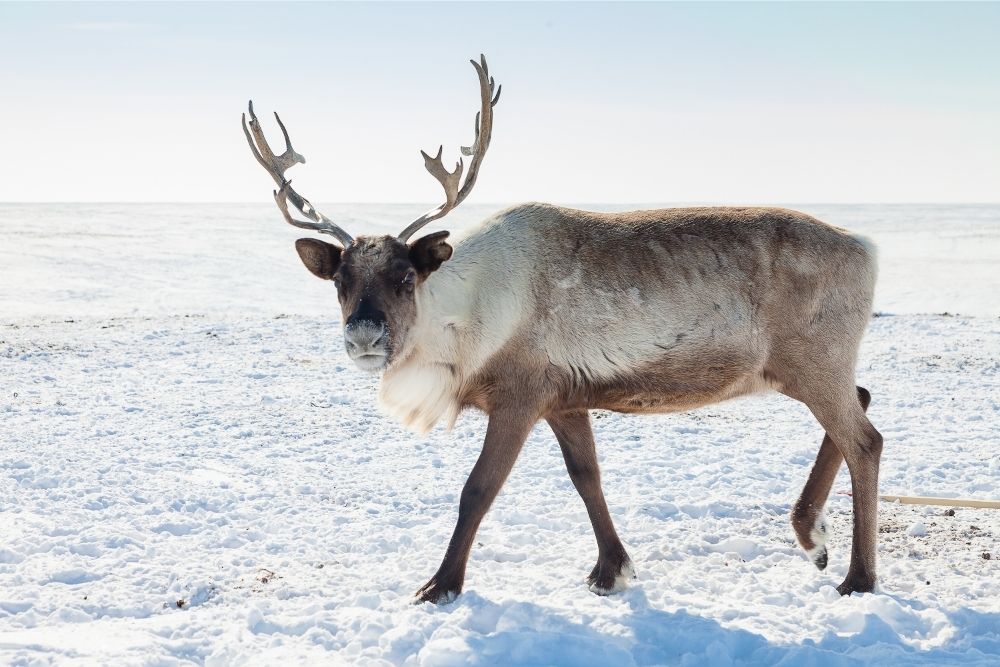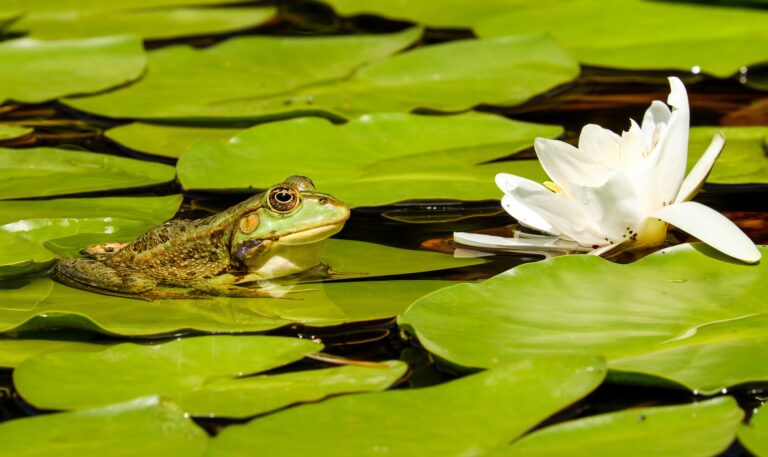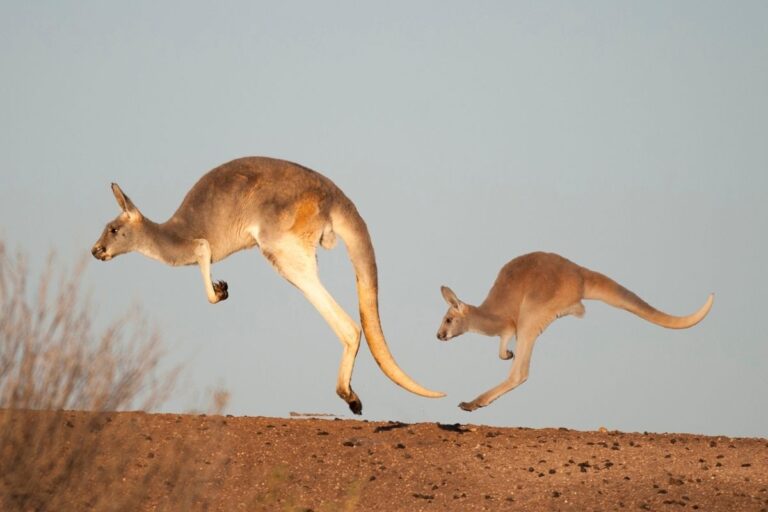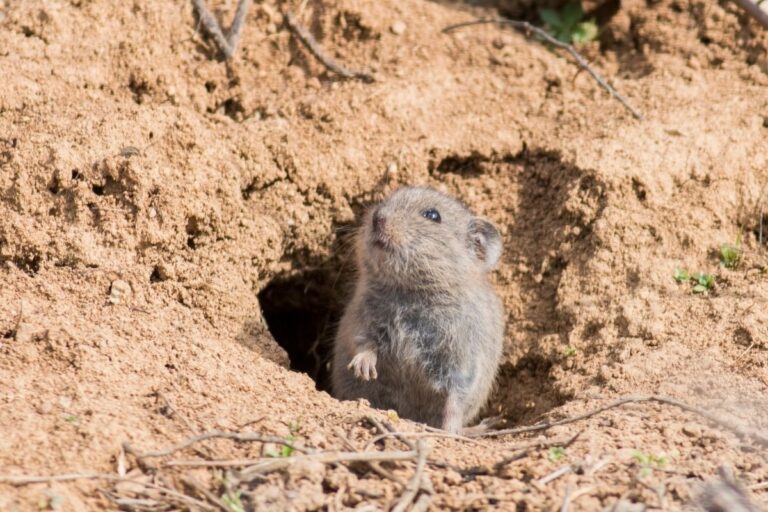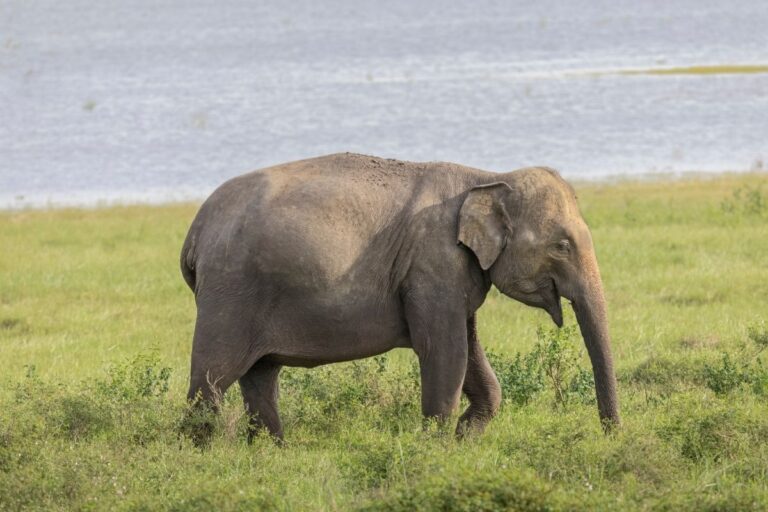Animals That Live In The Arctic
Last Updated on December 27, 2021 by
The Arctic is the region surrounding the North Pole, located at the northernmost part of the Earth. It’s characterized by polar conditions, a large ocean called the Arctic Ocean, as well as populated landmasses such as parts of Alaska, Canada, Finland, Iceland, Norway, Greenland, Sweden, and Russia.
The Arctic features average temperatures of around -34 degrees in winter and between 3-12 degrees in summer. Its habitat is made up of icy glaciers, snowy tundra, and flat plains.
There are lots of animals native to The Arctic that thrive under its unique conditions. Read below to find out about the Top 15 animals living in the Arctic.
Top 15 Animals that Live in the Arctic
1. Polar Bear
Polar bears have a very thick fur coat to help them survive extreme temperatures. Their strong, furry paws help them to keep a grip on the ice and to swim easily for hundreds of miles in the ice-filled ocean.
They are 6 feet tall and weigh between 500 and 720 kg. Seals and fish are their main source of prey.
2. Arctic Fox
Arctic foxes have a thick white fur coat allowing them to survive in dangerous Arctic conditions. They make tunnels in snow-covered areas for shelter, and their coat changes color to adapt to the season.
In the summer, they have a brown coat, and in the winter, they have a white coat. They prey on arctic hares, fish, and birds.
3. Reindeer
Reindeers migrate every year in large herds. They eat grasses which they dig out with their sharp hooves.
In the winter season, the hooves shrink to give them a better grip on ice and to help them swim. They are the only mammals that can see ultraviolet light reflected by the snow, which helps them to spot hidden predators.
4. Walrus
Walruses have long, powerful tusks which grow up to 1 meter in length. They use these to break ice blocks and take breaths from the ocean while underwater.
They live in large communities and have the ability to slow down their own heartbeats to adapt to the winter season.
5. Narwhal
Narwhals have a long spiral tusk and the males have a powerful long tooth, which they use to attract female narwhals during mating season and fight other male narwhals. They travel in large groups with up to 20 narwhals in search of food.
6. Beluga
Beluga whales live in the Arctic ocean and feature a bright white color and large, bulging forehead.
They vary in length from between 13 and 20 feet and weigh up to 1.3 tons. Their diet consists of sea life such as fish, shrimp, and octopus.
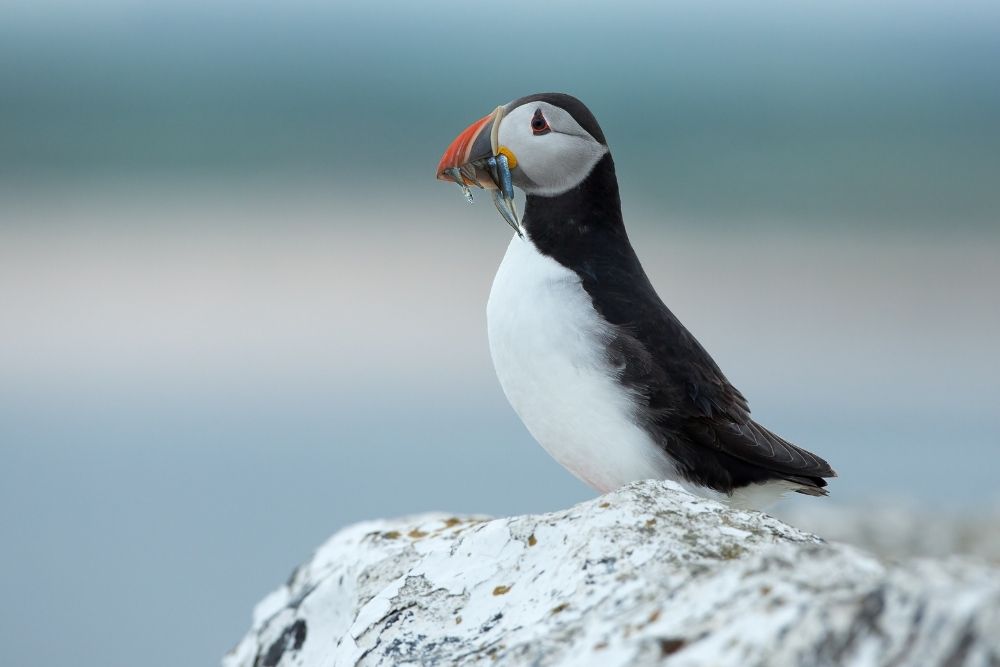
7. Puffin
Puffins are seabirds with waterproof feathers (which allow them to keep warm) that feed by diving into the water.
They can dive as deep as 200 feet underwater. They breed in large colonies on cliffs or islands, nesting in rock crevices or in burrows in the soil.
8. Snowy Owl
Snowy owls are expert hunters of arctic hares, mice, and birds, with excellent eyesight and hearing.
Male snowy owls have a bright white body, while females have a darker, spotted body. They make nests and breed in the Arctic tundra region.
9. Canada Lynx
The Canada Lynx belongs to the cat species. They have long legs to help them navigate snow-covered land.
Their coats change color depending on the season. In the winter, their coat is white and this changes to brown during the summer. Arctic hares are Canada Lynx’s main prey.
10. Arctic Hare
Arctic hares have a thick coat of spur and change their color during different seasons, white in winter and grey in spring. The ability to change their color helps them to hide from predators in the wild.
They are up to 24 inches long and weigh up to 7kg. They can reach speeds of up to 40 miles per hour and eat plants and roots.
11. Arctic Wolf
The Arctic wolf lives in the Arctic tundra and has white fur which allows them to blend into the snow.
To keep them warm in the icy conditions, their ears are small, their muzzles are short and their fur is thick. They roam across North America and Greenland but don’t travel across to Asia or Europe.
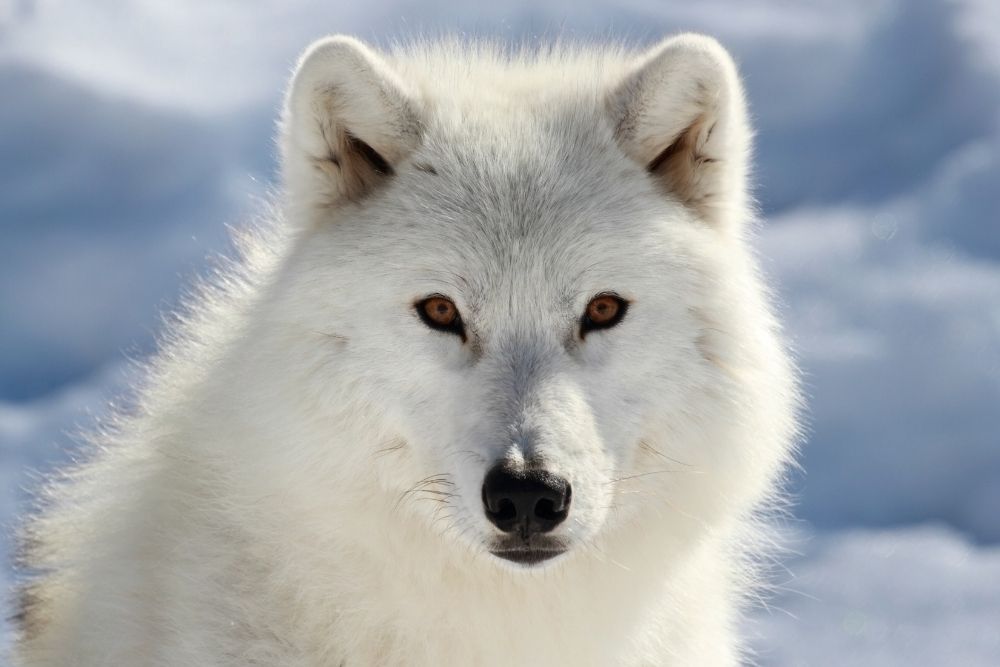
12. Moose
The moose also referred to as an elk, is the largest and heaviest out of the deer species. They are around 1.4 – 2.1 meters in height and weigh between 380 – 700kg.
They have huge, broad antlers and can reach speeds of up to 56 km per hour.
13. Arctic Tern
Arctic terns are white-feathered migratory birds that breed in the Arctic and fly to the Antarctic in the winter. They cover a huge distance of around 70900 km during their round trip.
They are up to 15 inches long with wingspans up to 85 cm.
14. Musk Ox
Musk Oxes have long, thick hair to protect themselves from the Arctic conditions. They inhabited the Arctic thousands of years ago and weigh up to 370 kg.
They normally eat roots and mosses and use their powerful hooves to search for food among the snow and ice-covered land.
15. Seal
Seals are semi-aquatic mammals that live in both the Arctic and Antarctic oceans. They can swim at a rate of 35 km per hour and prey on fish.
They use their front flippers as paddles and can lower their heart rate to suit long, deep dives beneath the ocean.
Final Thoughts
So, there you have it – 15 animals that live in the arctic. Some of these you may have expected to find on this list, but we’re certain that you’ll have learned something new as well!

